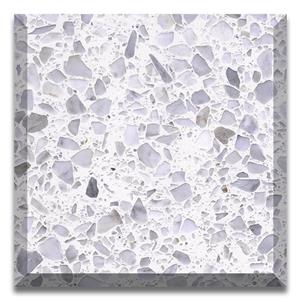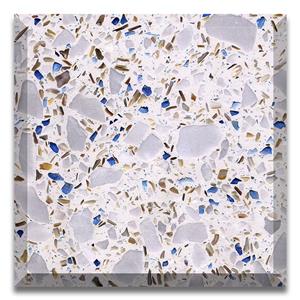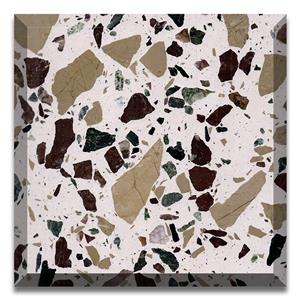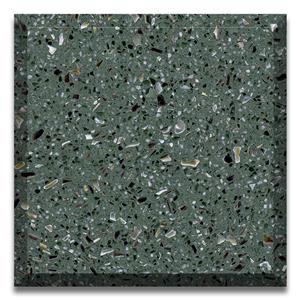Is Terrazzo a Natural Stone?
In recent years, terrazzo has reemerged as one of the most popular materials in both residental and commercial design. Its distinctive speckled surface, eco-friendliness, and remarkable versatility make it a favorite choice among architects and designers. But an often-asked question remains — is terrazzo a natural stone?
To answer that, we must explore what terrazzo is, how it’s made, and how it differs from other traditional stones used in flooring and surfaces.
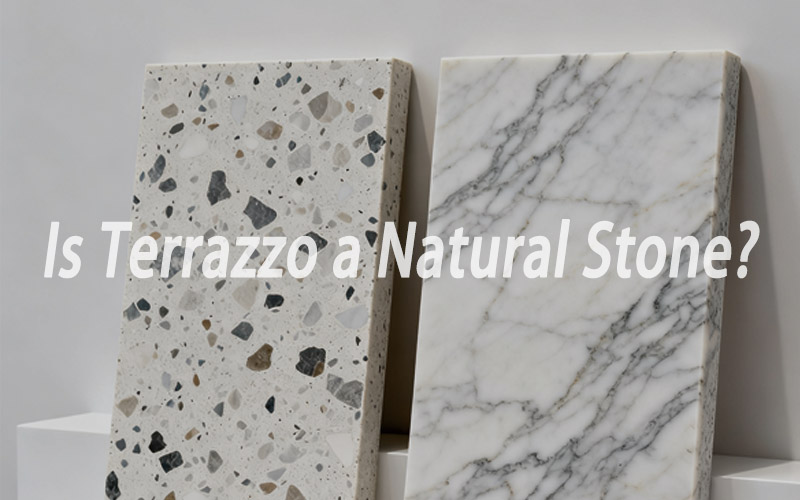
What Is Terrazzo?
To put it simply, terrazzo is not a single natural stone. Instead, it is a composite material that combines various natural aggregates—such as marble, quartz, granite, or glass chips—with a binder like cement or epoxy resin. Once poured, cured, and polished, the result is a durable, seamless surface with a unique decorative appearance.
This process gives terrazzo remarkable strength and longevity, but it also means it's engineered rather than quarried. That's why while terrazzo contains natural elements, it's not considered a “natural stone” in the strict geological sense.
How Terrazzo Differs from Natural Stone Flooring
Natural stones such as marble, granite, and limestone are cut directly from quarries and then finished into tiles or slabs. Each piece carries its own natural veining and texture, which contributes to the uniqueness of the installation.
Terrazzo flooring, on the other hand, is man-made from crushed natural materials. The aggregates—often offcuts or recycled fragments from stone production—are mixed with binders, creating a sustainable alternative that minimizes waste. Once polished, terrazzo floors can resemble marble or granite, yet they offer greater control over color and texture consistency.
So, while terrazzo is composed of natural stone particles, it is classified as a manufactured surface rather than a natural one.

The Composition and Manufacturing of Terrazzo
The making of terrazzo involves a precise combination of stone chips, pigments, and binding agents. Depending on the binder used, there are two primary types:
Cement-based terrazzo (traditional terrazzo) — This type uses a cement matrix, offering a classic look
with subtle color variations. It’s breathable and suitable for large-scale flooring projects.Epoxy-based terrazzo (modern terrazzo) — This version uses resin binders, allowing for thinner installations,
faster curing, and a broader color palette.
The manufacturing process includes:
Mixing the selected aggregates with the binder.
Pouring or pressing the mix onto a surface.
Grinding and polishing the surface to reveal the stone chips.
Sealing the floor for protection and shine.
This engineered process is what differentiates terrazzo from pure natural stone flooring.
Advantages of Terrazzo Flooring
1. Durability and Longevity
Terrazzo flooring can last for decades—sometimes over 50 years—with minimal maintenance. Its non-porous surface resists staining and moisture better than most natural stones.
2. Sustainability
Because it often uses recycled materials such as marble offcuts or glass, terrazzo is considered one of the most eco-friendly flooring solutions available.
3. Design Flexibility
Designers can choose from endless combinations of colors and aggregate sizes. Whether you want a neutral tone for a minimalist office or vibrant terrazzo tiles for a modern café, the possibilities are vast.
4. Low Maintenance
Unlike natural stones that require periodic sealing, terrazzo’s smooth, sealed surface makes cleaning easy—simple dust mopping and occasional polishing keep it looking new.

Terrazzo vs. Natural Stone: Which Is Better?
When comparing terrazzo flooring with natural stone surfaces, each has its advantages depending on project goals:
| Feature | Terrazzo Flooring | Natural Stone (Marble/Granite) |
| Composition | Engineered from stone chips and resin/cement | 100% natural stone |
| Maintenance | Low maintenance | Needs sealing and special cleaners |
| Durability | Very high (resistant to cracks and stains) | High but porous |
| Design options | Highly customizable | Limited to natural patterns |
| Cost | Moderate | Often higher due to quarrying |
| Sustainability | Can use recycled materials | Extraction-based |
For commercial spaces such as airports, schools, and malls, terrazzo is often the preferred option due to its durability, hygiene, and design consistency. Meanwhile, natural stones like marble retain appeal for
luxury residential interiors due to their organic texture and heritage.
Applications of Terrazzo in Modern Architecture
Modern terrazzo is found far beyond flooring. It’s now used for:
Countertops and vanities
Wall cladding and staircases
Furniture surfaces
Outdoor paving
Manufacturers and terrazzo & marble supply companies have expanded their product ranges to include precast terrazzo slabs, tiles, and panels—offering designers more freedom to experiment while maintaining technical performance.
Caring for Terrazzo Surfaces
Proper care ensures terrazzo’s brilliance lasts for decades.
Regular cleaning: Use a pH-neutral cleaner and soft mop.
Avoid abrasives: Never use harsh pads or acidic solutions.
Periodic polishing: Professional polishing restores shine when needed.
Protective sealing: Especially for high-traffic commercial zones, sealing prevents wear and discoloration.
By following these steps, terrazzo maintains its gloss and continues to rival even the most luxurious natural stones.

Why Terrazzo Continues to Grow in Popularity
Architects appreciate terrazzo for its timeless aesthetics and sustainable credentials. In an era focused on eco-friendly design, terrazzo’s ability to reuse stone waste aligns perfectly with green-building standards such as LEED.
For property developers, it offers a cost-effective, durable, and visually appealing flooring system. For homeowners, it’s a statement of taste—bridging the look of marble and the performance of engineered materials.
Conclusion: A Blend of Nature and Innovation
So, is terrazzo a natural stone?
Not exactly. Terrazzo is a composite material that integrates natural stone fragments into a man-made matrix, resulting in a surface that merges the best of both worlds—the beauty of nature and the precision of engineering.
From what is terrazzo floor to understanding how terrazzo flooring compares with marble or granite, one thing is certain: terrazzo’s future remains bright. As leading terrazzo & marble supply companies continue innovating, this material will keep transforming architecture with its balance of artistry, performance, and sustainability.



